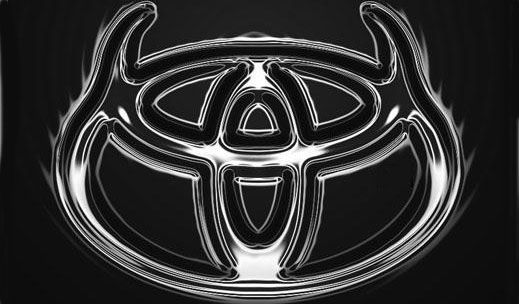New Toyota mark at Wrigley Field is uglier than expected.
The controversial sign, which was erected hastily after the Cubs get City Council approval of the environment is a wart on the face of the great lady of baseball - a highly visible intrusion of advertising in the ballpark that fans of the prize just because exempts from ad clutter.
The public got its first look at the sign on Friday and the Cubs White Sox square off in what used to be called Crosstown Classic and we now know, in another bow to the almighty dollar, as BP Crosstown Cup. Leave it to the Cubs to associate themselves with the sponsors - a reviled for recalled cars, and the other for its oil spill - who is to strengthen the team's reputation as perennial losers.
An increase of about 50 feet above the sidewalk, the sign consists of two steel posts holding the letters, which detail "Toyota" and the company's ubiquitous, three-ovaled logo. The sign is not quite at the back of the left field stands, as Cubs originally planned, but a few feet inside - a shift that allowed city officials to wink, nod, and said that it is indeed a sign of the interior, and therefore does not affect the outer limits signs at Wrigley .
Anyone who looks at a sign from Waveland Avenue instantly recognize this line of reasoning, what it was: pure fiction. The sign that hangs over the stands, no more than a sign of internal Cubs first place team.
Two posts to support short and square, like a square version of Gumby. They did not come close to matching beautifully proportioned, highly articulated steel used in the elegant standards of Wrigley light on the roof or anywhere else around the football field. But at least the posts are painted dark green, shades Wrigley respective trademark instead of the original plans squeal red.
Toyota logo and the letters that are more muted red, as they face inward to the stadium still looks completely out of place. A little red in order Wrigley as color accent, as in the discreet "Hey Hey" signs on the foul pole. All that is more than a spot of tension and aggression in the stadium, which as the name implies, a park-setting, wrapping you into the arms of the green. (Fortunately, the rear emblem and the letters facing Waveland, green).
Assorted part of the sign to create a whole that is clearly vertical, almost rudely interrupting the continuous horizontal sweep podium, which was supposed to be protected by official landmark status Wrigley. Shame on the Commission on Chicago landmarks, appointed keepers of historical treasures of Chicago, for the approval of the sign. All employees of the commission did perfume the pig, insisting on the tricks, such as replacing internal illumination for the sign with a small design fixtures that mimic those on the Centerfield scoreboard Wrigley.
In any other stadium, a sign, as it would not matter. But Wrigley is not any other stadium. Designed by Zachary Taylor Davis, and opened in 1914, with additions such prominent architects as Holabird & Root, is the second oldest stadium in the majors - Boston Fenway Park over two years - and the return of a loved one.
The stadium, well ordered and pastoral, is Eden. Its surrounding neighborhood, the chaotic and commercial implies, Paradise Lost. One of them is sacred, the other profane. Sharply defined the tension between these opposites that gives Wrigley its uniquely powerful sense of place. The sign does not destroy that person, but this is hardly innocuous insert that Cubs chairman Tom Ricketts said that it would be. The best thing about him is that it's not permanent. It can be dismantled as quickly as it was displayed.
And it is worth considering because, after three years, ill-conceived transaction Cubs "from Toyota is not over.
Why sign there in the first place? If you think Cubs, it's not there to hide the view of colorful casino horseshoe sign on the roof of the building at the northeast corner of Waveland and Kenmore Avenue. It's there, in the opinion of the team, to my present location for what it's worth it.
Other around Wrigley, the Cubs get 17 percent of gross income to reduce the roof of the owners. At the northeast corner of Waveland and Kenmore, there's no roof seats - and, thus, neither team revenue. The building with the horseshoe casino sign as the gap in the row of teeth. Fill this gap with revenue-generating rooftop perch, maybe even (hold on Cubbie blue hat) with tasteful electronic scoreboard, and you could have done more than close the circle around the roof Wrigley. You would do away with the financial incentive for an ugly mark Toyota.







No comments:
Post a Comment